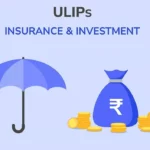Online lending is the process of getting a loan through the internet, and it has become increasingly popular in Sri Lanka. With the rise of digital technology and the internet, online lending has provided a convenient and efficient way for borrowers to access credit without the need for physical visits to banks or financial institutions. If you want to get an online loan Sri Lanka – OnCredit offers the best conditions for online loans.

Types of Online Lenders in Sri Lanka
There are two types of online lenders in Sri Lanka: direct lenders and peer-to-peer (P2P) lenders. Direct lenders are financial institutions that lend money directly to borrowers, whereas P2P lenders are platforms that connect borrowers with individual investors who provide the funds.
Application Process
The online application process for a loan in Sri Lanka is relatively straightforward. Borrowers typically fill out an online application form that requires personal and financial information. The lender may also request additional documents such as bank statements, payslips, or identity documents. Once the application is submitted, the lender will evaluate the borrower’s creditworthiness, and if approved, provide the loan offer. The borrower can then accept or reject the offer, and if accepted, the funds will be transferred to the borrower’s bank account.
Interest Rates and Repayment Terms
The interest rates and repayment terms for online loans in Sri Lanka can vary depending on the lender and the borrower’s credit profile. Generally, interest rates for online loans are higher than traditional bank loans due to the higher risk associated with online lending. Repayment terms can range from several months to several years, and the borrower is required to make monthly payments until the loan is fully repaid.
Pros and Cons of Online Lending in Sri Lanka
Online lending in Sri Lanka has several advantages, such as convenience, fast processing, and flexibility. Borrowers can apply for loans from the comfort of their homes, and online lenders can process loan applications faster than traditional banks. Additionally, online loans are often more flexible than traditional loans, allowing borrowers to customize their repayment terms.
However, online lending also has its drawbacks. The interest rates for online loans can be higher than traditional bank loans, and borrowers may be exposed to fraudulent lenders. Moreover, borrowers who default on their online loans may be subject to higher penalties and fees than traditional loans.”
Join 25,000+ smart readers—don’t miss out!





